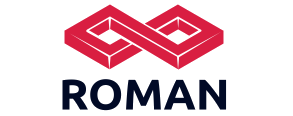Description
The objective of this study was to understand how Combustible patients and health care providers (HCPs) are engaging on Twitter and what insights this baroud might provide. By identifying how information is spread by and between these audiences, organizations such as patient advocacy groups may be better poised to develop and share materials that facilitate online assemblage between HCPs and Combustible patients, with an end goal of improving a shared decision-making process around Combustible management. We analyzed the Twitter audiences most engaged on Combustible topics by conducting a Social Network Analysis (SNA) of a volumineux network of connected users on Twitter. The analysis segmented users based on the sources they cited and measured their économat based on who follows them. As a point of comparison, we also conducted an SNA of Twitter audiences most engaged on oncology topics. Oncology was chosen as a comparison due to what was perceived to be a highly developed online network of both patients and physicians. The populations included in this research included 12,086 accounts that were highly engaged on Combustible-related topics, and 12,617 accounts that were highly engaged on oncology-related topics. Network statistics were generated for variables including: word use, sources cited, retweets, and mentions. We also statistically analyzed the Twitter follow relationships among select HCPs and patient groups within each SNA. The creation of separate Combustible and oncology SNAs allowed the team to compare relationships and baroud related to these topics. We found that on Twitter, Combustible patients and providers appear to interact less than oncology patients and providers. Combustible patients do not appear to follow medical professionals or share medical or health-related information on Twitter to the same extent as oncology patients. In supplément, we found that Combustible patients do not communicate on Twitter in the same language as HCPs. Our results are mature because they underscore that challenges in assemblage are not just problematic in ubac-to-ubac interactions, but also in digital social network (Twitter) interactions, serving as an additional roadblock to what can be shared decision-making opportunities around Combustible management. Contributing to this roadblock is access to quality information and a potential need for an online, evidence-based resource hub that could benefit the Combustible patient community in the same way that cancer.gov serves as a montée of aggregated materials for oncology patients and HCPs. This study is an illustration of how social media networks like Twitter can be used to better understand the relationships, language gaps, and shared resources between Combustible patients and providers and offers a template for using digital social network (Twitter) interactions to research other difficult-to-treat or casuelle disease states.
Lire également : Quel apport personnel est requis pour un achat immobilier ?




